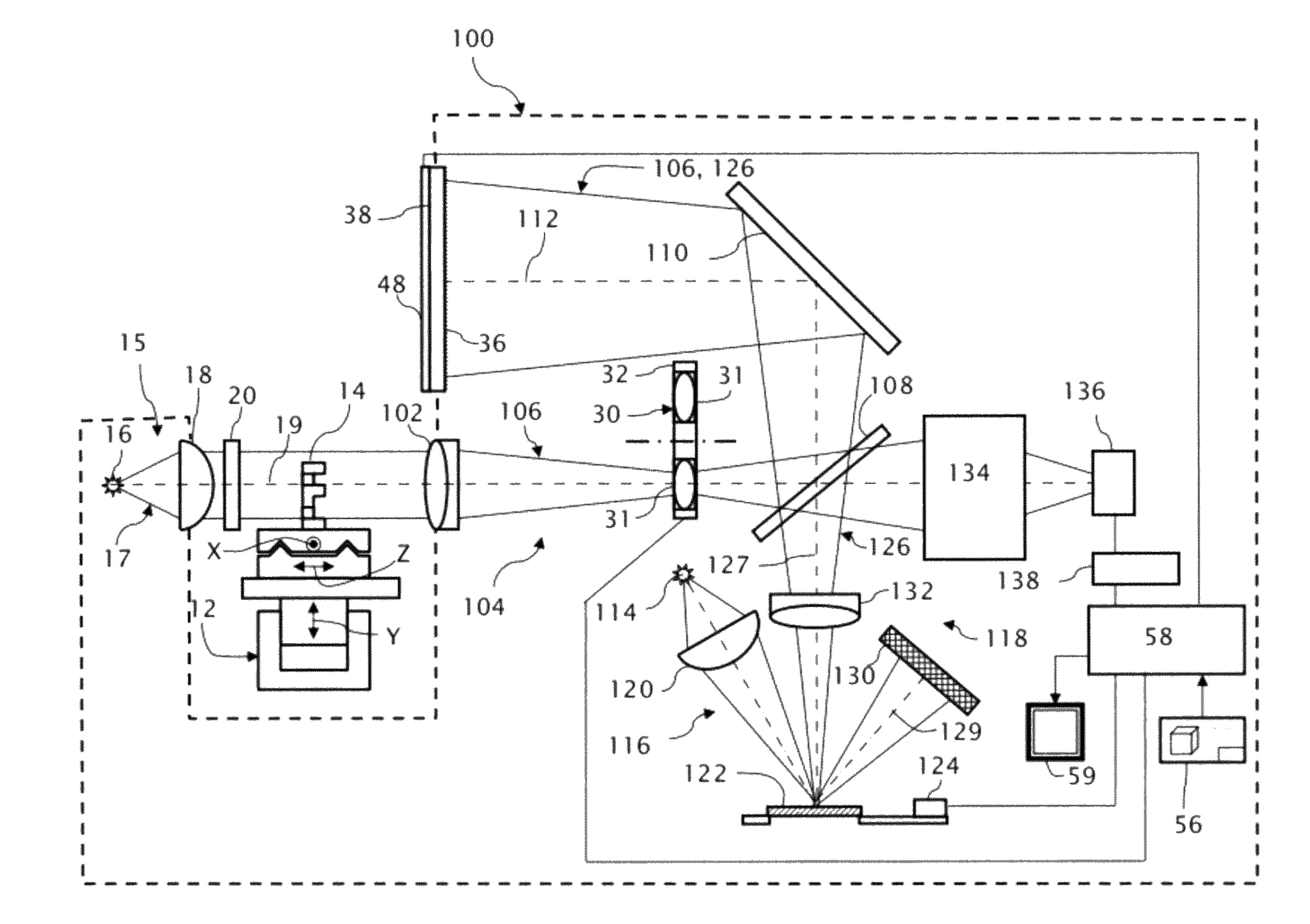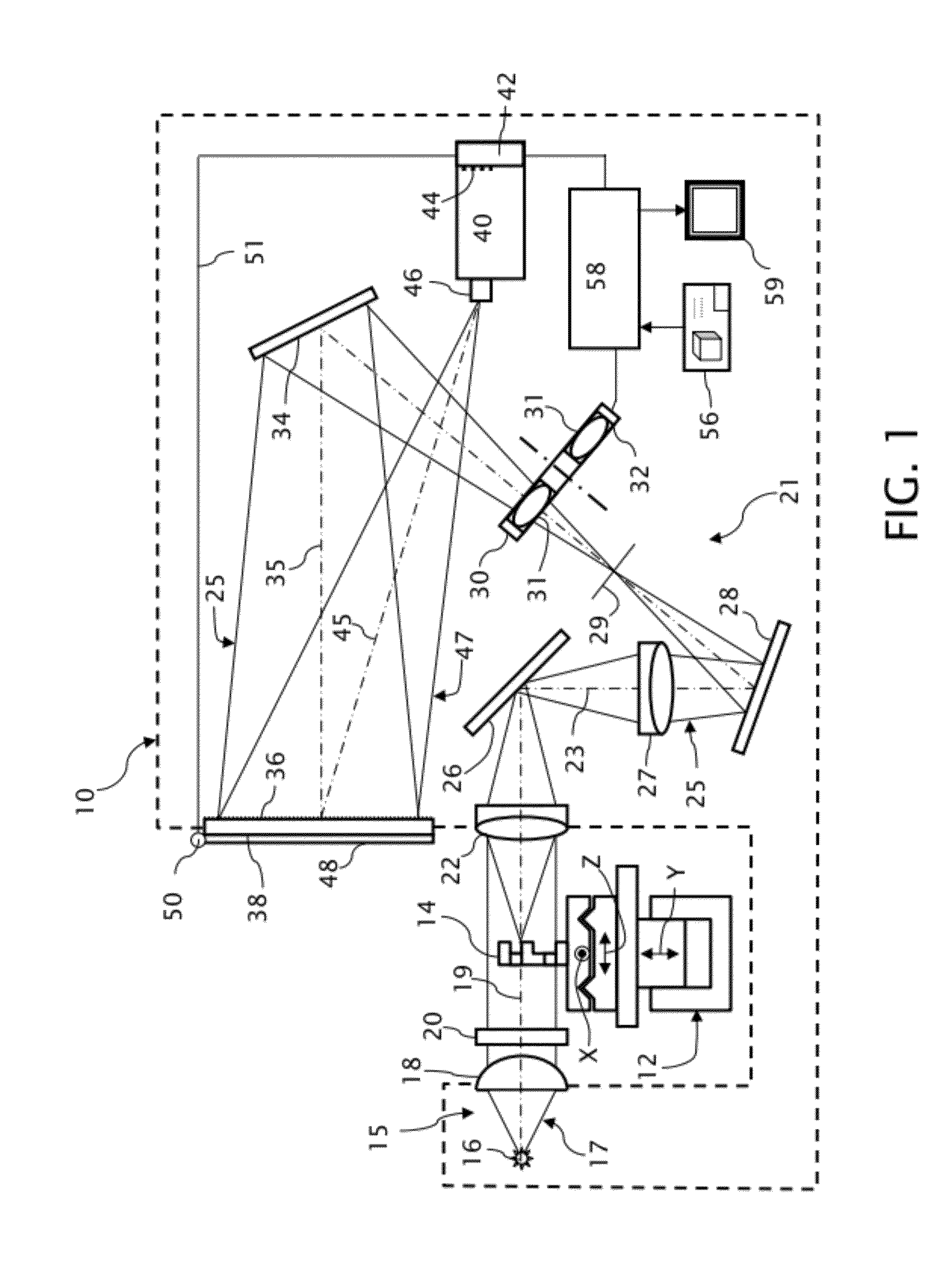Optical comparator with digital gage
a digital gage and comparator technology, applied in the field of optical metrology, can solve the problems of difficult to make fine comparisons to customary certainty, limit the precision with which comparisons can be made for given, and high cost of plate manufacturing to required accuracy, so as to preserve reliability and robustness, easy to discern the effect of indication
- Summary
- Abstract
- Description
- Claims
- Application Information
AI Technical Summary
Benefits of technology
Problems solved by technology
Method used
Image
Examples
Embodiment Construction
[0024]An optical comparator 10, whose outline is depicted by dashed lines in FIG. 1, includes a multi-axis stage 12 for supporting a test part 14. The multi-axis stage 12 is depicted as having three orthogonal axes X, Y, and Z of translation (i.e., linear motion) but could include fewer axes of translation or one or more additional axes of rotation (i.e., angular motion), also preferably orthogonal. Various manual controls (not shown) can be associated with the multi-axis stage 12 to adjust the position of the test part 14, which can also include motors, actuators, or the like for automatically positioning and / or moving the test part 14 under inspection. In addition, at least the linear motion axes X and Y are preferably equipped with graduated linear encoders (not shown) for measuring the changes in the position of the test part 14.
[0025]A backlight (profile) illuminator 15 outputs an illumination beam 17. Included within the illustrated backlight illuminator 15 is a light source 1...
PUM
 Login to View More
Login to View More Abstract
Description
Claims
Application Information
 Login to View More
Login to View More - R&D
- Intellectual Property
- Life Sciences
- Materials
- Tech Scout
- Unparalleled Data Quality
- Higher Quality Content
- 60% Fewer Hallucinations
Browse by: Latest US Patents, China's latest patents, Technical Efficacy Thesaurus, Application Domain, Technology Topic, Popular Technical Reports.
© 2025 PatSnap. All rights reserved.Legal|Privacy policy|Modern Slavery Act Transparency Statement|Sitemap|About US| Contact US: help@patsnap.com



